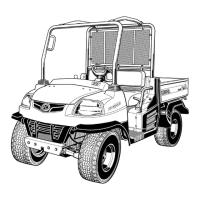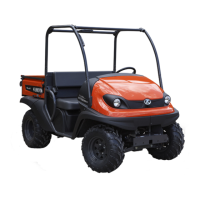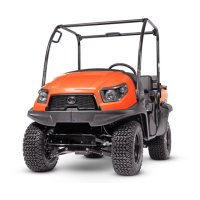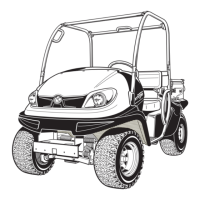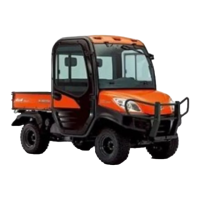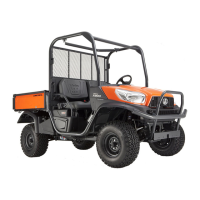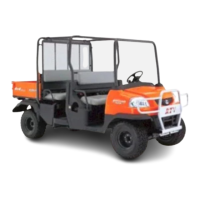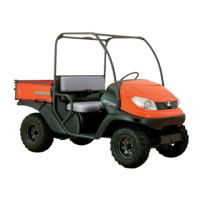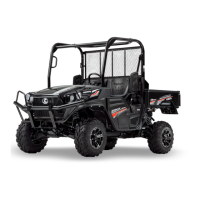1. T
o slow charge the battery, connect the positive
terminal of battery to the positive terminal of
charger and the negative to the negative, then
recharge in the standard fashion.
A boost charge is only for emergencies. It will
partially charge the battery at a high rate and in a
short time. When using a boost-charged battery, it is
necessary to recharge the battery as early as
possible.
Failure to recharge the battery will shorten the
service life of battery.
The battery is charged if the indicator display turns
green from black.
When exchanging an old battery for a new one, a
battery of equal specification.
Battery type Volts (V) Capacity
GP24 (90D26L) 12 52 (at 5H.R (A.H))
Battery type
Reserve ca-
pacity (min)
Cold crank-
ing amps
Normal
charging rate
(A)
GP24
(90D26L)
125 680 6.5
2.2 Storing the battery
When storing the machine for long periods of time,
follow the procedure in this section.
1.
Remove the battery from machine.
2. Adjust the electrolyte to the proper level.
3. Store the batter in a dry place out of direct sunlight.
The battery self-discharges while it is stored. Recharge
it
once every 3 months in hot seasons and once every
6 months in cold seasons.
SERVICE EVERY 200 HOURS
Perform inspection and servicing for every 50 hours of
operation at the same time.
1. Checking the fan belt tension
WARNING
T
o avoid personal injury or death:
• Only check the fan belt with the engine off and
the starter key removed.
1. Check and adjust the tension of V-belt.
(SeeChecking
and adjusting the V-belt tension on
page 76)
(1) V-belt (A) Approx. 7 mm to 9 mm
(B)
Approx. 6 kg to 7 kg
1.1 Checking and adjusting the V-belt
tension
1. Press
the fan belt in the middle with a fingertip by a
force as follows.
The tension of fan belt is proper if the fan belt
deflects the following length.
Fingertip force About 6 kg to 7 kg
Fan belt tension About 7 mm to 9 mm
2. If
the tension of fan belt is improper, adjust the
tension of fan belt by loosening the bolts and
shifting the alternator in the direction shown by the
arrow (A) in the following figure.
3. Check the pulleys and the V-belts for damage and
wear.
Carefully check to see if the V-belts fit snugly into
the V-belt grooves.
PERIODIC SERVICE SERVICE EVERY 50 HOURS



